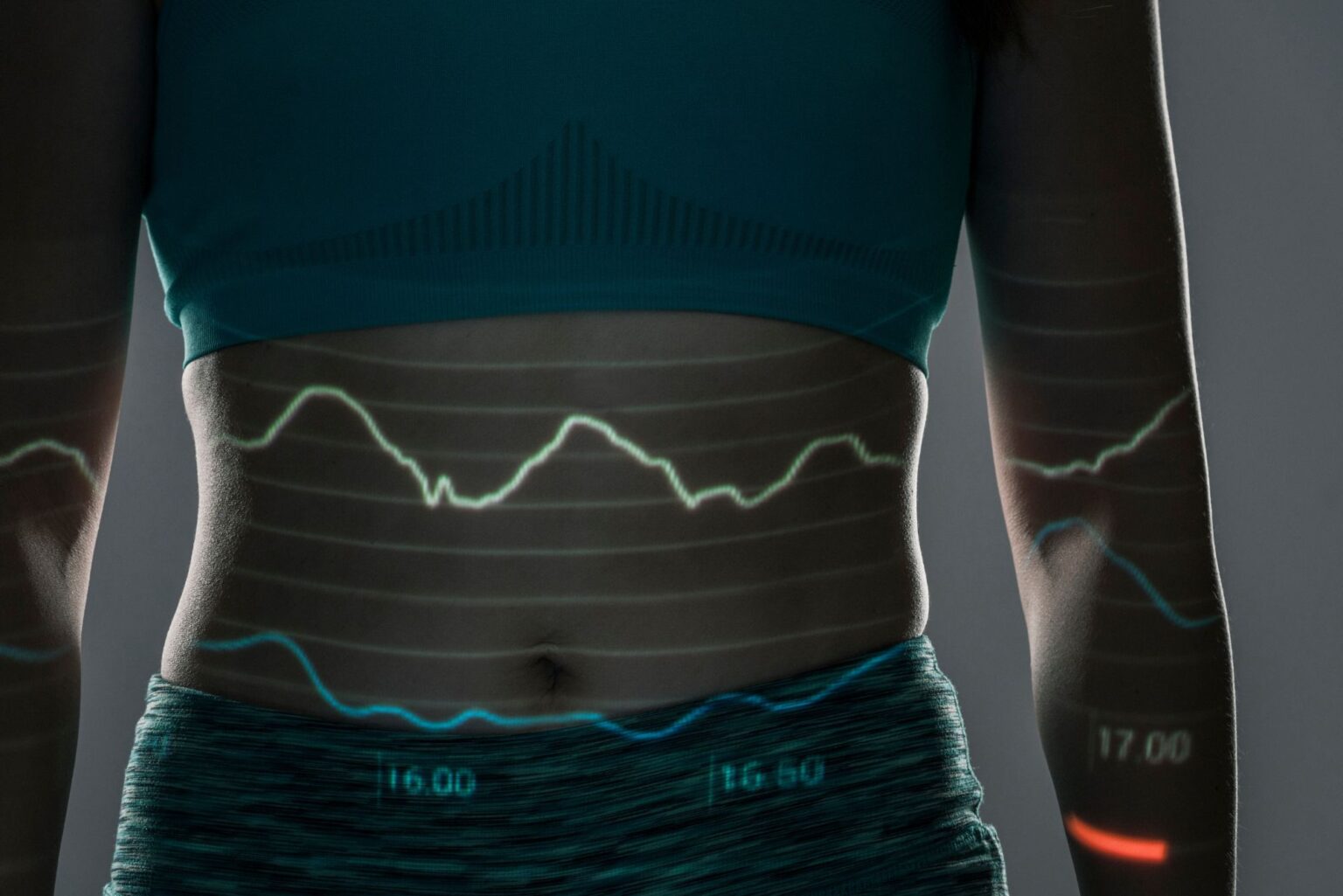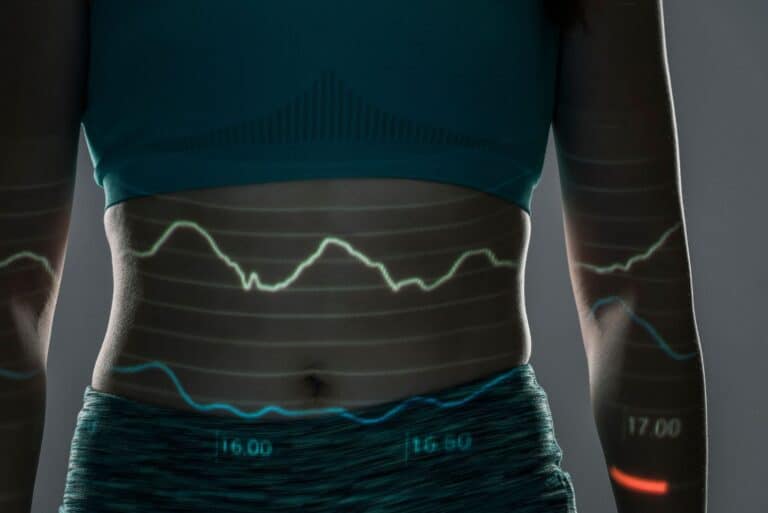


A heart rate zone calculator for runners is vital for optimising your training intensity. It helps you tailor your workouts to hit your fitness goals efficiently. In this article, you’ll learn how to use this tool and the advantages of heart rate zone training.
A heart rate zone calculator serves as a vital tool for runners, providing a personalised framework for training sessions. Calculating heart rate training zones allows runners to optimise their workouts, ensuring the correct intensity for their fitness levels. Such personalisation helps runners target specific goals, whether it’s improving performance, burning fat, or increasing speed.
Why not try our free Coach the Run Heart Rate Zone Calculator to find your ideal running heart rate zones? Simply enter your age and maximum heart rate (MHR) to get started!
Heart rate zone training shines in situations where pace isn’t a reliable measure of effort. For instance, running on hilly courses or in adverse weather conditions can significantly affect pace, making it an unreliable metric. Heart rate remains a consistent and objective measure, enabling runners to maintain desired intensity despite external factors. This approach ensures that workouts are both effective and balanced, accommodating different fitness goals and training conditions.
A heart rate zone calculator aids runners in maintaining a balanced workout routine by accommodating various training intensities throughout the week. Maintaining this balance prevents overtraining, ensures adequate recovery, and ultimately leads to better performance and reduced injury risk. Additionally, using a heart rate zones calculator can help optimise training sessions.
Heart rate zones are vital for monitoring training intensity and aligning workouts with fitness goals. These zones are defined as specific percentages of maximum heart rate (MHR) and provide a framework for assessing workout intensity. Understanding and utilising these zones enables runners to tailor their training for optimal results.
The structure of heart rate zones typically consists of five distinct zones, each corresponding to different levels of training intensity. These zones range from low to high intensity and serve various purposes, from building aerobic endurance to improving speed and power. Heart rate zones help runners focus on the correct intensity levels for specific training goals, ensuring effective workouts.
Heart rate measurement offers a precise numeric evaluation of training intensity, unlike subjective methods. This precision allows runners to monitor exercise intensity accurately, make informed training decisions, and adjust workouts based on performance and recovery needs.
The five key heart rate zones provide a structured approach to training, each serving a specific purpose:
Determining your maximum heart rate (MHR) is the initial step in establishing heart rate training zones. MHR is defined as the highest heart rate a person can achieve without severe problems and serves as the foundation for calculating specific training zones.
One common method to estimate MHR is the ‘220 minus age’ formula, which provides a general idea of your maximum heart rate. For a more reliable estimation, the formula HRmax = 208 – (0.7 × age) can be used, offering a slightly more accurate calculation. These formulas are straightforward and offer a good starting point for most runners, especially when considering maximum heart rate (max hr and maximum heart rates.
However, for those seeking the most accurate measurement, a stress test conducted under professional medical advice is recommended. This test involves gradually increasing exercise intensity until the maximum heart rate is reached, providing a precise HRmax value.
Age significantly impacts the calculation of maximum heart rate, influencing the formulas and methods used. If you haven’t tested your real maximum heart rate yet, using age-based estimates is a practical approach to finding it.
Once you have your maximum heart rate, using a heart rate zone calculator is straightforward. The calculator applies specific percentages to your MHR to determine your training zones, which are typically divided into five distinct levels of intensity. These zones help categorise workouts from low to high intensity, allowing for a tailored and effective training plan.
Start by listing some forbidden forms of the keyword “target heart rate” according to the rule 5. Input your maximum heart rate and resting heart rate if needed to use the calculator. The calculator will then provide your target heart rate training zones, giving you clear targets for different types of workouts. This approach ensures that each training session aligns with your fitness goals, be it endurance, speed, or overall performance.
Don’t wait – start today! Try our free Coach the Run Heart Rate Zone Calculator and take the first step toward optimising your training.
Establishing heart rate training zones is crucial for creating an effective training plan that aligns with your fitness objectives. Incorporating heart rate zone training allows for varied intensities throughout the week, ensuring a balanced and comprehensive training approach. This method involves specific runs dedicated to various heart rate zones, optimising performance and preventing overtraining.
Combining heart rate data with metrics like pace and perceived effort provides a more comprehensive training approach. This combination helps runners adapt workouts to individual needs and conditions, maintaining desired intensity levels and achieving training goals.
Training in Zone 2 is vital for developing a strong aerobic base, which is crucial for endurance sports. This zone targets aerobic and lactate thresholds, enhancing overall endurance and allowing runners to sustain longer efforts without excessive fatigue.
Marathon runners should spend about 70-80% of their weekly mileage in Zone 2 to optimise performance. Running at about 68% of maximum heart rate (Zone 2) allows for efficient fat burning, making it valuable for endurance and weight management.
Speed and interval training are essential components of a runner’s training regimen, focusing on improving performance and anaerobic fitness. Zones 4 and 5 are particularly beneficial for these types of workouts. Training in Zones 4 and 5 requires reaching 95-100% of your maximum heart rate, significantly boosting VO2 max and enhancing your ability to sustain higher efforts.
Effective interval training involves planning structured workouts with rest and recovery periods between intervals. This structure allows the body to recover adequately, ensuring that each interval is performed at the desired intensity.
Training in Zones 4 and 5 enhances running economy and overall performance, making it essential in a comprehensive different training zones plan.
Adjusting and monitoring your heart rate zones is key to maintaining effective training. Variations in heart rate readings can occur due to factors like temperature, terrain, and hydration levels, making it important to listen to your body’s signals and not rely solely on heart rate monitor readings.
Heart rate zones provide objective data, allowing runners to monitor their exercise intensity more accurately. This data allows for informed decisions about workout intensity and necessary adjustments based on daily performance and recovery needs.

Common mistakes in heart rate zone training can hinder progress and lead to inaccuracies. Wrist-based heart rate monitors, for instance, can be significantly less reliable than chest straps, potentially leading to incorrect heart rate readings during workouts. Environmental factors like heat and steep inclines can also dramatically elevate heart rates, complicating efforts to maintain a target zone.
To avoid these pitfalls, it’s essential to understand that walking or hiking during low heart rate sessions can be effective. Training regularly within optimal heart rate zones promotes safer workouts, reduces overexertion risk, and ensures steady progress.
Selecting the right tools and devices for measuring heart rate is vital for accurate data and effective training. The Polar H10 heart rate monitor, for example, offers the ability to connect to two Bluetooth devices simultaneously, making it versatile for various workouts. Similarly, the CooSpo H808S is an affordable chest strap that works with multiple fitness apps, making it suitable for diverse training activities.
For those new to heart rate training, the MyZone MZ Switch, which includes both chest and wrist straps, provides enhanced accuracy and ease of use. Devices like the Wahoo Tickr X and Garmin’s HRM-Pro offer long battery life and compatibility with various fitness apps, making them ideal for long-distance training and regular use.
Accurate heart rate measurement optimises training and helps achieve fitness goals.
Using heart rate zones for different runs enhances overall training effectiveness. Long runs, for instance, should generally be performed at about 70% of your maximum heart rate to build endurance and maintain a relaxed pace. Progressive runs, on the other hand, target a heart rate zone of 85-88%, pushing you to maintain a strong but manageable pace.
Zone 1 is typically used for warm-ups and recovery sessions, ensuring that the body can recover adequately between more intense workouts. Monitoring heart rate during runs prevents overtraining and manages recovery times effectively, ensuring each run contributes positively to fitness goals.
Heart rate zone training benefits runners by enhancing speed, power, and overall performance. Training in Zones 4 and 5 can significantly boost speed and anaerobic fitness, which is crucial for competitive performance. Heart rate zone training can also increase VO2 max, boosting performance capacity and endurance.
Besides performance gains, heart rate zone training improves cardiovascular health, reduces cholesterol levels, and enhances blood sugar management. These benefits make heart rate zone training a valuable approach for runners looking to enhance both their fitness and overall health.
Heart rate zone training has several advantages over other methods like pace-based training. Heart rate training provides a clear metric of effort, allowing runners to assess their performance regardless of their emotional state during exercise. This objectivity helps runners maintain desired intensity levels, leading to more effective and consistent training outcomes.
On the other hand, pace-based training aligns closely with specific race goals, requiring runners to practice at target speeds to improve their performance. While both methods have their merits, heart rate zone training offers a more adaptable and precise approach to managing training intensity, particularly in varying conditions.
In summary, heart rate zone training provides a structured and effective approach to running, allowing runners to tailor their workouts to their specific needs and optimise performance. By understanding and utilising heart rate zones, runners can achieve their fitness goals, improve endurance, and enhance overall health. Implementing heart rate zone training into your routine can lead to significant improvements in both performance and well-being, making it a valuable tool for runners of all levels.
So, why not try our free Coach the Run Heart Rate Zone Calculator today and take your running to the next level? Use heart rate zone data as a tool to guide you towards reaching your full potential as a runner.
So what are you waiting for? Lace up those running shoes and start incorporating heart rate zone training into your routine today! Your body (and race times) will thank you.
To calculate your maximum heart rate, use the formula ‘220 minus your age’ or the more precise equation HRmax = 208 – (0.7 × age). Choosing either method provides a quick estimate for your training guidelines.
Training in Zone 2 significantly enhances your aerobic base and overall endurance while optimising fat burning, making it particularly beneficial for athletes such as marathon runners. This approach allows for long, sustainable training sessions that bolster performance effectively.
Wrist-based heart rate monitors are less reliable primarily because movement and improper placement can lead to inaccurate readings. It is essential to consider these factors for more precise heart rate measurements.
Utilising heart rate zones effectively enhances your training; employ Zone 1 for warm-ups and recovery, Zone 2 for long runs, and higher zones for progressive and interval runs. Tailoring your training based on these zones will optimise your performance.
The best devices for measuring heart rate include the Polar H10, CooSpo H808S, MyZone MZ Switch, Wahoo Tickr X, and Garmin’s HRM-Pro, known for their accuracy and app compatibility. Selecting any of these will ensure reliable heart rate monitoring for your fitness needs.
Join our mailing list to stay up to date with the latest UK running events, training tips, and exclusive offers on running products. Rest assured, we value your privacy and would never dream of selling your address. Sign up now…
Share this article
Running is a popular form of exercise that provides numerous health benefits, such as improved...
Running a marathon is an incredible athletic feat that many people aspire to achieve. However,...
The benefits of our 24-week marathon training plan Look no further if you’re looking for...
Completing a marathon in under four hours is a remarkable achievement for countless runners. It...
“I enjoy running a lot and managed to complete the Great South Run last year,...
Kettlebells, a popular type of weight training equipment originating from Russia, consist of a cast...
We’re here to make sure you’re up-to-date with the latest running tips, events and product discounts – we’ve always got your back! Rest assured, we value your privacy and would never dream of selling your address.
BONUS: Sign up today and receive a FREE code for our Sub-4-Hour Marathon Plan
Your privacy settings
Manage Consent Preferences
Necessary
Analytics
Embedded Videos
Marketing
Facebook Advanced Matching
Facebook CAPI